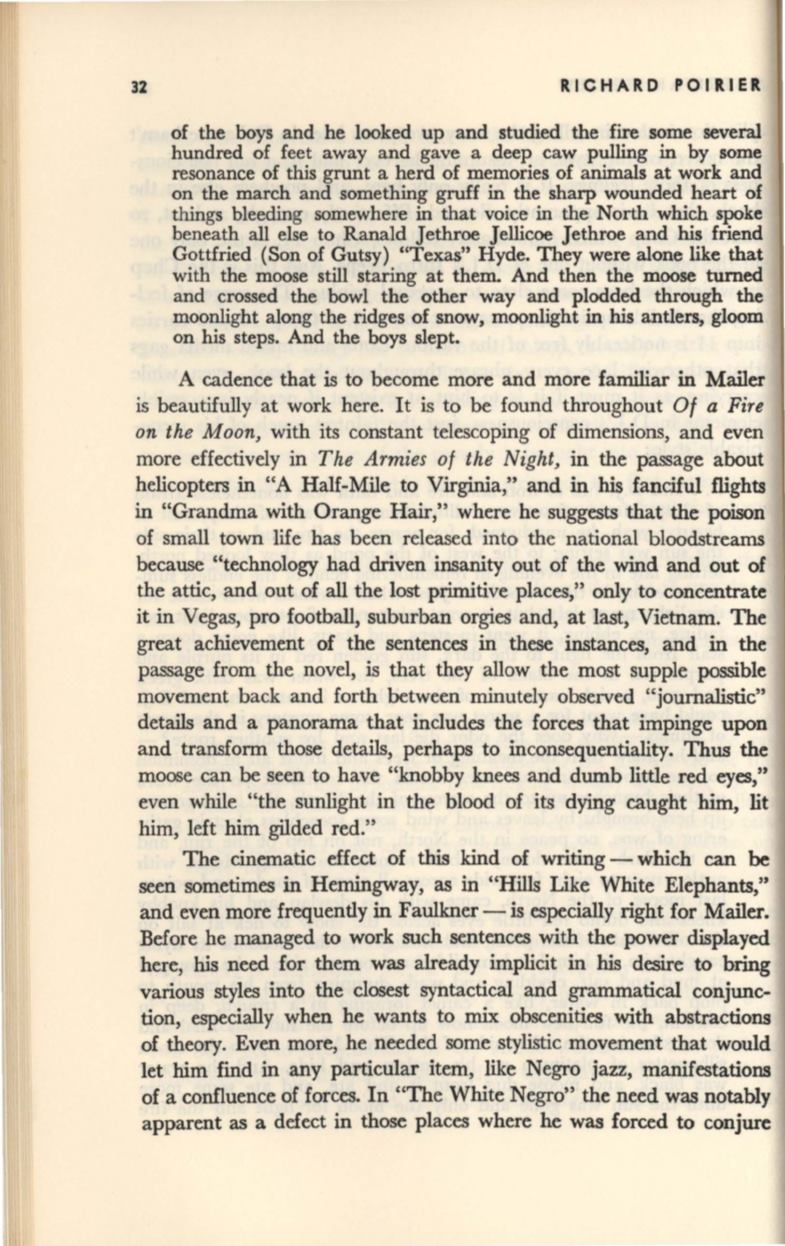
32
RICHARD POIRIER
of the boys and he looked up and studied the fire some several
hundred of feet away and gave a deep caw pulling in by some
resonance of this grunt a herd of memories of animals at work and
on the march and something gruff in the sharp wounded heart of
things bleeding somewhere
in
that voice
in
the North which spoke
beneath all else to Ranald Jethroe Jellicoe Jethroe and his friend
Gottfried (Son of Gutsy) "Texas" Hyde. They were alone like that
with the moose still staring at them. And then the moose turned
and crossed the bowl the other way and plodded through the
moonlight along the ridges of snow, moonlight in his antlers, gloom
on his steps. And the boys slept.
A cadence that is to become more and more familiar in Mailer
is beautifully at work here.
It
is to be found throughout
Of
a
Fire
on the Moon,
with its constant telescoping of dimensions, and even
more effectively in
The Armies of the Night,
in the passage about
helicopters in "A Half-Mile to Virginia," and in his fanciful flights
in "Grandma with Orange Hair," where he suggests that the poison
of small town life has been released into the national bloodstreams
because "technology had driven insanity out of the wind and out of
the attic, and out of all the lost primitive places," only to concentrate
it in Vegas, pro football, suburban orgies and, at last, Vietnam. The
great achievement of the sentences in these instances, and
in
the
passage from the novel, is that they allow the most supple possible
movement back and forth between minutely observed "journalistic"
details and a panorama that includes the forces that impinge upon
and transfonn those details, perhaps to inconsequentiality. Thus the
moose can
be
seen to have "knobby knees and dumb little red
eyes,"
even while "the sunlight in the blood of its dying caught him, lit
him, left him gilded red."
The cinematic effect of
this
kind of writing - which can
be
seen sometimes in Hemingway, as in "Hills Like White Elephants,"
and even more frequently in Faulkner - is especially right for Mailer.
Before he managed to work such sentences with the power displayed
here, his need for them was already implicit in
his
desire to bring
various styles into the closest syntactical and grammatical conjunc–
tion, especially when he wants to
mix
obscenities with abstractions
of theory. Even more, he needed some stylistic movement that would
let him find in any particular item, like Negro jazz, manifestations
of a confluence of forces. In "The White Negro" the need was notably
apparent as a defect in those places where he was forced to conjure


